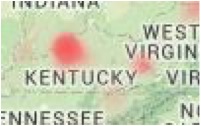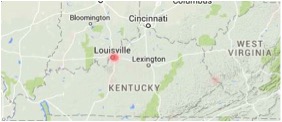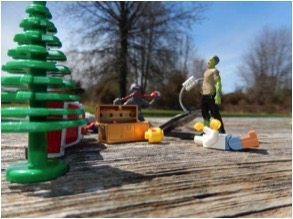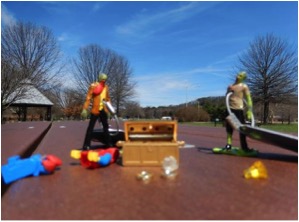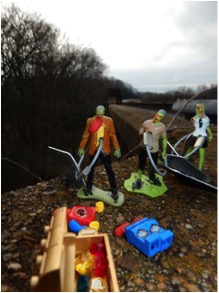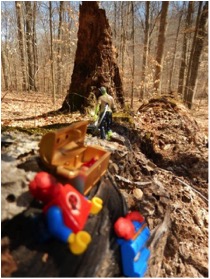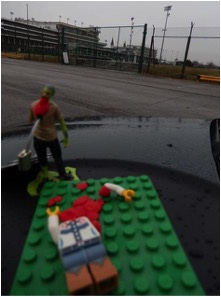As we study the spread of the zombie plague via geocaching, we are constantly awed by the ferocity of this virus. We have watched this virus spread around the globe at an absolutely catastrophic pace, wiping out humans with what appears to be a 100% mortality rate This plague is spreading faster than any other diseases humans have studied, including small pox and ebola. Prospects for survival for the human race are currently looking grim.
One of the most interesting aspects of this disease is how some zombies have managed to survive longer than others. “Survival” rates among the undead vary greatly. There are a variety of reasons that zombies quickly disappear: bodily wear and tear, destruction by live humans etc. But it is still not clear what directly affects continued long term activity. Do they go dormant? Are they affected by the temperatures in different climactic regimes? All of these theories require much more in-depth studies.
In the mean time, this case study focuses on one of our more resilient and active zombies, patient # 18 in our study, Ulrich. Before Ulrich succumbed to the plague, he was a caterer who owned a charming catering business in Mainz, Germany. He seemed like a great guy who liked to work out at the gym and collect geocoins, pathtags, and pasta in all shapes and sizes. Our research has revealed that he contracted the plague from Birgit, patient #17 in our study, who was a pastry chef that Ulrich occasionally hired to work events. Ironically, Birgit was the person who introduced Ulrich to geocaching.
Before Ulrich turned, he brought his geocoin collection to a geocaching event. There he met Eva, patient #196 in our study. Through handling of the geocoin collection, Ulrich gave Eva the gift that keeps on giving – the zombie plague. Ulrich has been so active that we are sure he has infected others, this is just the first zombie we have been able to link to him.
As of May 23, 2016, Ulrich has traveled 152,099.9 kilometers, or 94,510 miles. He has infected approximately 1,255 locations, making him the 9th most active zombie in our study to date.
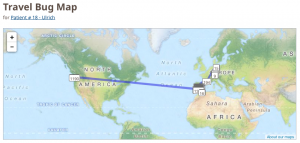 A wide view of Ulrich’s travels
A wide view of Ulrich’s travels
Our research shows that Ulrich first infected a geocache called Gänsmarkt in Rheinland-Pfalz, Germany on April 3, 2013 – which was over three years ago. His destruction of Germany did not end there. Ulrich infected numerous geocaches in Germany for approximately a month, leaving a trail of death and destruction in his wake.
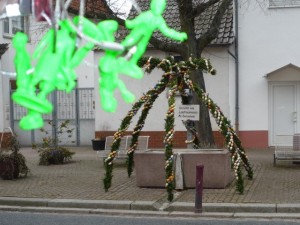 Traffic camera footage shows Ulrich and other zombies at a fountain decorated with Easter Decorations in Germany.
Traffic camera footage shows Ulrich and other zombies at a fountain decorated with Easter Decorations in Germany.
In May 2013 Ulrich suddenly was reported to be attacking geocachers at a geocache in Andalucía, Spain. A few months later, on August 18, 2013, Ulrich was spotted in Portugal.
Ulrich traveled from geocache to geocache while in Portugal, and he encountered and presumable infected or gorged on many unsuspecting geocachers. One geocacher described a scary scene where they found Ulrich laying in wait for them in a cache in Lisboa. This deadly encounter somehow involved a sheep and someone named Wally. While the language barrier has caused us some translation issues, it is quite clear that it was a gruesome scene.
Some geocachers who encountered Ulrich in Portugal were able to get out a few short words in their logs in an attempt to warn others. For example, one geocacher said in a log “A sombra da ponte” which translates to “the shadow of the bridge.” Was this a warning to other geocachers that Ulrich was lurking in the shadow of a bridge in Portugal? He said in another log “na toca” which translates to “in touch.” Did he mean to say “Não toque” which means “don’t touch”, and could have been a warning to others not to touch Ulrich? We may never know…
Around September 17, 2014, Ulrich jumped the border and began infecting caches in Aquitaine, France. While in Aquitaine he infected dozens of caches. However, there was something about those caches that didn’t quite please his palate, because just a few days later he returned to Portugal. This is something that may be worthy of further study in the future.
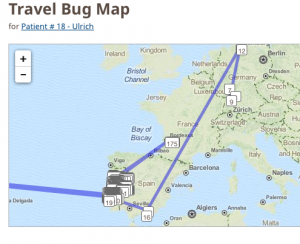 While Ulrich began in Germany and took a brief sabbatical in France, he seems to prefer infecting geocaches in Portugal.
While Ulrich began in Germany and took a brief sabbatical in France, he seems to prefer infecting geocaches in Portugal.
The sheer viciousness of this plague can be seen by Ulrich’s activities on or around one day: August 14, 2015. Records show that on that day Ulrich infected a power geotrail of approximately 100 geocaches in Aveiro, Portugal. The name of the power trail is “I ♥ Aveiro”, and was designed to highlight the beautiful attractions in the small city of Aveiro. The next day Ulrich stumbled into a geocaching Mega event, where he came into contact with many innocent geocachers. We can only imagine the bloody carnage.
Years after we first learned of Ulrich, he is still going strong. He has encountered an uncountable number of geocachers, and despite their best efforts, he is still infecting geocaches at a steady rate. Ulrich seems to have found a substantial number of geocaches in Portugal that has given him a steady supply of geocachers and muggles to feast on, and as a result he hasn’t left the country in years.
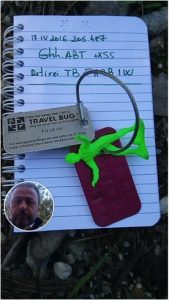 Our most recent image of Ulrich, captured at a geocache in Portgual on April 18, 2016. Is that one of his most recent victims?
Our most recent image of Ulrich, captured at a geocache in Portgual on April 18, 2016. Is that one of his most recent victims?
Unfortunately, this case study has failed to turn up any specific reasons why this particular zombified geocacher has lasted so much longer than many others. We will continue to look at more specific cases in an attempt to better understand this trend.
Our continued gratitude goes to all the survivors out there who have submitted logs lettings us know about Ulrich’s activities, while putting themselves in grave danger to do so. Without geocachers like this, the study of this plague would not be possible.
Stay safe geocachers.





